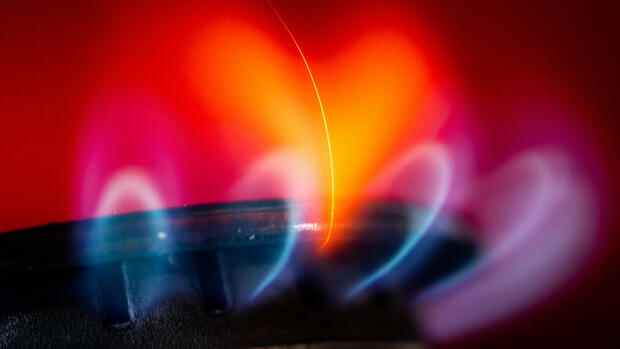The federal government is reacting to the sharp rise in energy prices with energy price brakes worth billions.
(Photo: dpa)
Berlin The electricity and gas price brake should apply retrospectively from January. The federal government decided on Tuesday.
This means that the last disputes surrounding the planned reduction in energy prices for business and consumers have been resolved. The government is thus also meeting demands from the energy industry to ensure clarity as quickly as possible, since the implementation of the regulations requires considerable effort.
With the gas price brake, the gas price for private households, small and medium-sized companies with an annual gas consumption of less than 1.5 million kilowatt hours from March 2023 to April 2024 will be limited to 12 cents gross per kilowatt hour. This limit applies to 80 percent of the annual consumption from the previous year. For those who are already paying more, the following applies: the monthly deductions should decrease accordingly. In March, the relief amounts for January and February 2023 will also be credited retrospectively. District heating customers also benefit.
For industry, the gas price brake will apply from January 2023. The price per kilowatt hour will be capped at 7 cents net for industrial customers. However, the use of the price brake for industrial companies is subject to conditions.
Top jobs of the day
Find the best jobs now and
be notified by email.
For example, there is an obligation to maintain jobs: companies that receive a total of more than two million euros in relief from the regulations on the gas price and electricity price brakes must retain at least 90 percent of their jobs in Germany by April 2025, according to the draft law on the gas price brake, which the Handelsblatt reports present.
>> Read here: How long does the gas last? These are the scenarios for the winter
The industrial gas price brake applies nationwide to around 25,000 companies. In addition, 1,900 hospitals are to benefit from the regulation.
Electricity price brake: Relief for January and February is to be paid in March
The electricity price brake is also to apply from March 1, 2023 to April 30, 2024. In March, the relief amounts for January and February 2023 will also be credited retrospectively.
The electricity price for private consumers and small and medium-sized companies with a power consumption of up to 30,000 kilowatt hours is limited to 40 cents including all taxes, levies, levies and network charges. This applies to 80 percent of the previous year’s consumption. For industrial customers, the limit is 13 cents plus taxes, duties and surcharges for 70 percent of previous consumption.
The expenses for the electricity price brake are to be recovered in part by skimming off random profits from certain electricity producers. Only “profits at a level that nobody expected” would be addressed, according to government circles.
The rule had long been debated. Representatives of the energy industry had criticized in particular that the random profits should also be skimmed off retrospectively. However, the coalition is accommodating the industry: The retroactive effect should only apply from September 1, 2022. In early drafts there was still talk of a retroactive effect from March 2022. The regulation should apply until “at least June 30, 2023”.
>> Read here: Weber and Fuest in a dispute – what does the gas price brake do?
Power plants that can produce electricity cheaply and sell it at high prices are affected by skimming off profits, because the generation costs of other power plants, especially gas-fired power plants, have risen very quickly and very sharply.
The power plants with the comparatively low electricity generation costs include wind, photovoltaic and hydroelectric power plants, waste incineration plants, nuclear power plants and lignite-fired power plants. Random profits are only skimmed off at these power plants.
“The EU regulation also allows the profits of hard coal-fired power plants to be skimmed off. However, this is not implemented for reasons of security of supply, otherwise the proportion of electricity generated from gas could increase. Because gas is scarce, this must be avoided at all costs,” says government circles.
The amount of the levy is based on the amount of electricity generated, the production costs and the prices achieved on the market. “Reference costs” are calculated from this information. For renewable energy systems, additional information from bids at the auctions for funding under the Renewable Energy Sources Act is used. In addition, there are “safety surcharges”, according to the federal government.
More: Electricity price brake and gas price brake – what you should know
